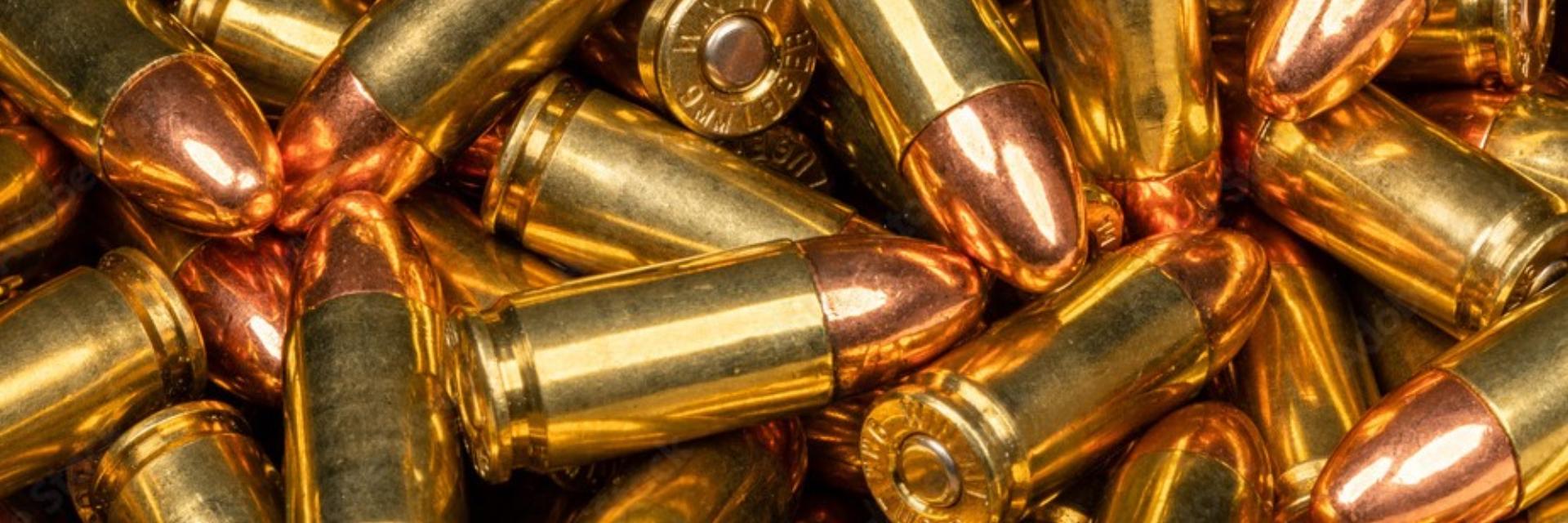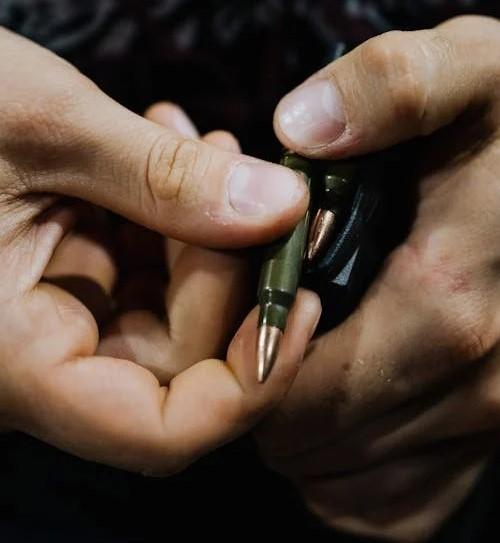
Police Ammo
Look at any box of ammo (whether it’s intended to be used as police ammo or in official duty or not) and you will get flooded by acronyms, initialisms and other metrics that signify the purpose and performance of the ammo.
You’ll have cartridge nomenclature, muzzle energy and velocity, bullet type, and of course, bullet weight, which is measured in grains.
Now, you may have known how important bullet type was (for instance, FMJ vs. HP - more on that in a second) but did you know that bullet weight is also a critical factor in determining ballistic performance?
Here are a few things to know.
The Advantages of a Lighter Bullet
Regardless of whether we’re talking about the payload of a shotshell, or about handgun or rifle ammo, the lighter the bullet (or shot load) the less recoil it will produce, if you hold all other factors equal.
Granted, you could increase the propellant charge (within limits) in order to produce a flatter-shooting and harder hitting (and therefore kicking) bullet, but there’s only so much you can do on this front.
And so, as a result, lighter bullets are often preferred when shooting in scenarios or disciplines in which recoil is a concern. In some training applications, a lighter bullet may be preferred, although this is not always the case (see below).
It just so happens that lighter bullets (especially when loaded hotter, that is, with a higher propellant charge) tend to shoot flatter, too. So for longer ranges (if hitting, not dispatching the target, is all that matters) a lighter bullet can be beneficial too.
But this is effectively where the advantages of a lighter bullet end, and the advantages of a heavier bullet come into focus.
Where a Heavier Bullet Matters
Heavier bullets carry more energy and tend to have higher sectional density and retain ballistic energy better downrange - though this is not always the case.
Sectional density refers to how effectively the bullet can penetrate a target. Generally, spitzer bullets are better at penetration than round ball ammo - but weight comes into play here, too. Holding all else equal, the heavier the bullet, the better it will penetrate.
Because heavier bullets carry more mass, they also (again, holding all else equal here) carry more energy to the target as they will bleed less potential energy in the face of drag.
Consequently, this means that heavier bullets hit harder and carry more ballistic energy to the target, which, as a result, produces more ethical dispatching potential - all else being equal. Bigger, heavier bullets hit harder, and therefore are more lethal.
It is also the case that bigger, heavier bullets also tend to penetrate further. Take, for instance, two 9mm FMJ bullets; the one that weighs more is going to penetrate the target further, assuming equal propellant charges and barrel lengths.
Heavier bullets also produce more muzzle energy, so for firearms that cycle through the inertia of recoil, heavier bullets will incur fewer jams in autoloading platforms. All in all, the heavier the bullet, the more reliably it will cycle semi-autos.
Now, heavier bullets also tend to produce more recoil, and on top of that, they don’t shoot as flat as their lighter counterparts. So at extended ranges, these things have to be accounted for.
With that said, when it comes to retained ballistic energy, heavier bullets tend to win out over lighter bullets.
It should also be noted that whereas civilians may train with lighter bullets than the defensive rounds they’d use in their carry guns, law enforcement personnel tend to train with bullets of the same weight they’d carry on duty.
This is because it’s critical for the gun to behave exactly the same way in training that it would in the field. As a result, officers who carry 147 grain HP bullets in the field should train with 147 grain FMJ ammo. This way, they know exactly what to expect in the field and the ammo they utilize for training and drilling will offer the same performance and replicate the same recoil (or very close to the same recoil) as what they carry on duty.

Other Factors
In addition to bullet weight, it is also important to consider other factors in police ammo, such as:
- Bullet type
Holding everything else equal, the bullet type is more important than the bullet weight. For instance, an FMJ bullet is going to penetrate more effectively than a hollow point bullet; conversely, a hollow point bullet is going to dump its energy more effectively into the target.
- Whether or not the core is bonded
Some hollow point ammo contains a jacket that’s bonded to the bullet core, whereas others are non-bonded. Bonded bullets experience superior mass retention and tend to penetrate further, non-bonded bullets tend to exhibit more explosive expansion, transferring more energy more rapidly.
- Muzzle energy and velocity (products of propellant charge and bullet weight)
Lastly, consider also the muzzle energy and velocity, which account not only for bullet weight but also the propellant charge. The higher the muzzle energy, the harder the bullet will hit, and the higher the muzzle velocity, the flatter it is likely to shoot, once again keeping everything else equal.
For More Information on Police Ammo, Bullet Weight and More: Contact Us
Hopefully this short post answered some of your questions about bullet weights and types, especially those used in official capacity or as police ammo. If not, get in contact with one of our representatives and we will be more than happy to answer your questions.